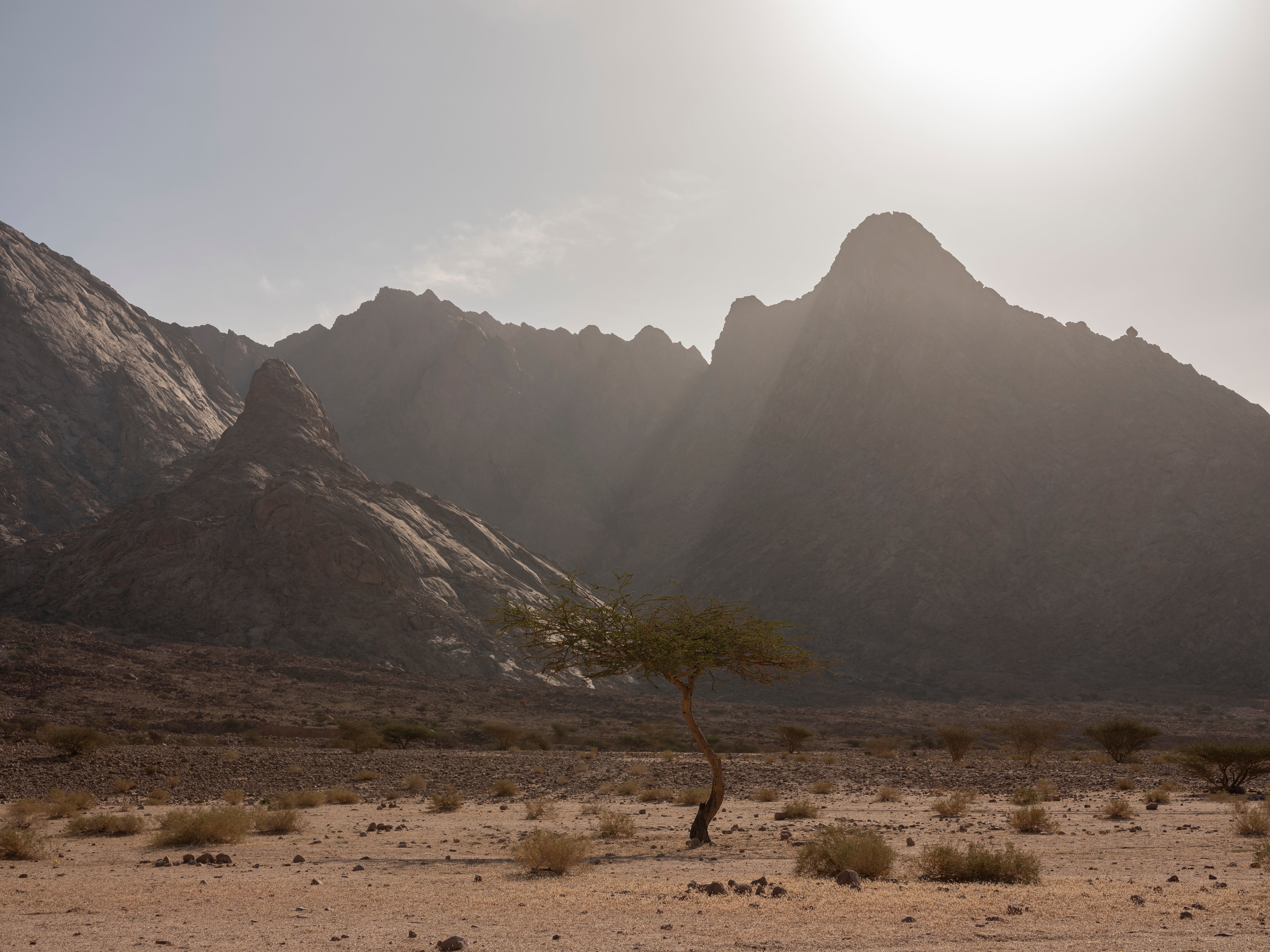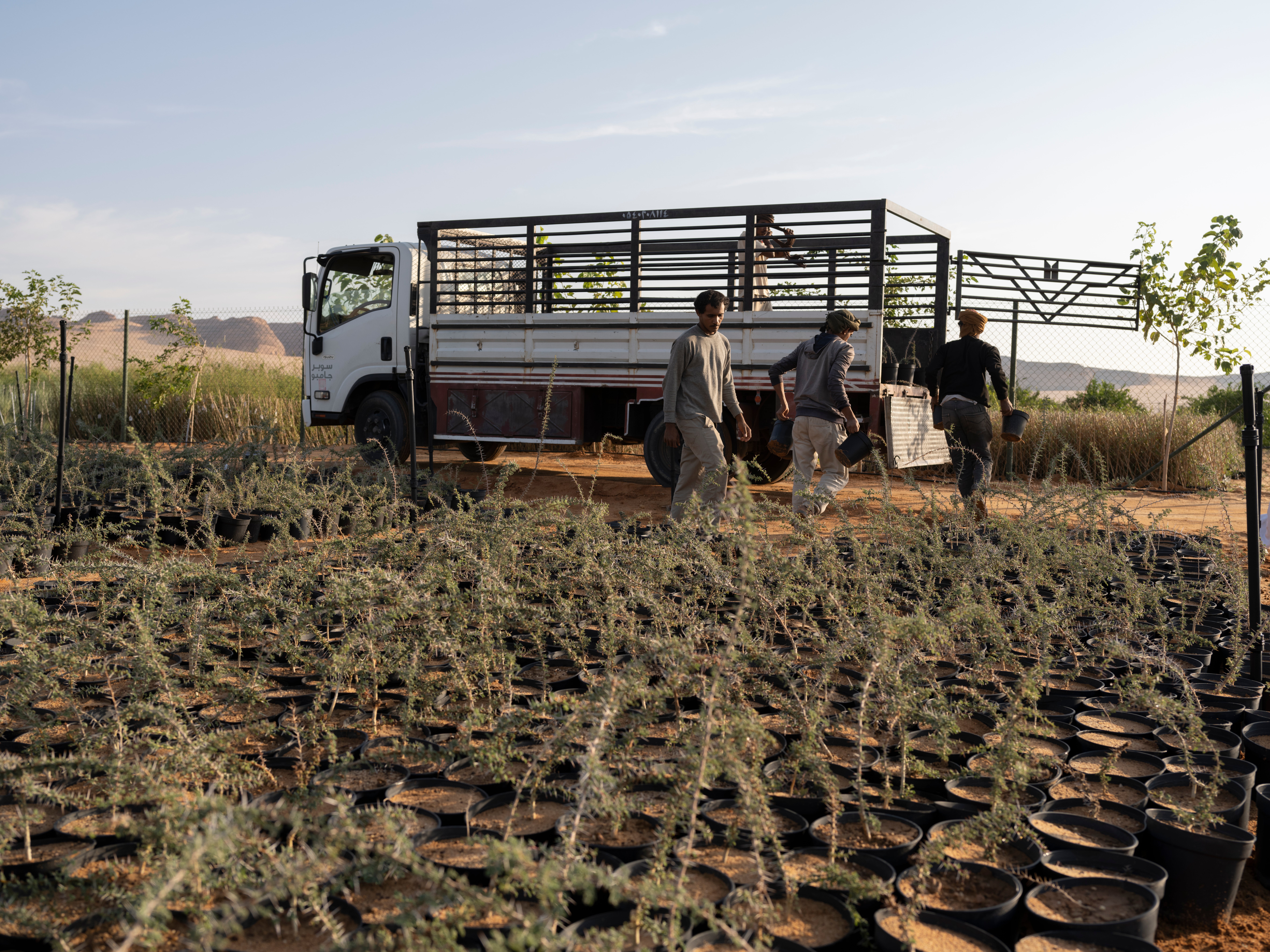A line in the sand: How Saudi Arabia is delivering on key promises from Cop26
As Cop27’s Saudi Green Initiative gets underway, a look at how the kingdom is delivering on three key promises made a year earlier in Glasgow — and what’s still to be done

PLEDGE #1
To halt deforestation and desertification by planting 450 million trees and rehabilitating large swathes of degraded lands by 2030. One of the largest reforestation projects globally.
What’s happened since?
8.4 million trees have been planted across Saudi Arabia in the last year. And as Dr Osama Faqeeha, deputy minister of the environment explained today at the Saudi Green Initiative: “Today, we have commitments underway with 600 million trees.”
To look at a specific example, in the nurseries around the World Heritage Site AlUla, a quarter of a million saplings have been grown from seeds or cuttings. Here, a whole-of-society effort will help to restore vital ecological functions, improve air quality and reduce sandstorms.
Dr Faqeeha continued to stress how vital it was that 50% of investment in these trees had come from private sectors: “Investment shouldn’t be limited to the public section. We need everyone: public, private, NGOs.”
What’s next?
Opening the Middle East Green Initiative Summit at Cop27 in Sharm el-Sheikh, Saudi Arabia’s Crown Prince Mohammed bin Salman built on the plans announced last year: to reduce global carbon levels by 2.5% by planting 50 billion trees across the Middle East, including 10 billion in Saudi – an ambition that is the equivalent of every person in the world planting 6.5 trees.

PLEDGE #2
To cut carbon emissions to net zero by 2060, including reducing carbon emissions by 278m tonnes annually by 2030. This was a key part of a climate change plan described as “bold and courageous” by Patricia Espinosa, the head of UN Climate Change.
What’s happened since?
Saudi Arabia’s Minister of Energy, HRH Abdulaziz bin Salman Al Saud, took the stage today declaring “it’s time to show how much we have done in fulfilling our promises”, and the Saudi response has been two-fold.
Firstly, renewables. At the Middle East Green Initiative earlier this week, HRH Mohammed bin Salman reaffirmed Saudi’s commitment to environmental goals pledging that 50% of the electricity produced inside the Kingdom will be from renewable sources by 2030. That’s estimated to reduce the Kingdom’s carbon emissions by 15% — or 44 million tonnes — by 2035.
In 2020, Saudi Arabia generated less than 730 GWh from renewables, accounting for 0.2% of the country’s electricity production. Today, Saudi’s National Renewable Energy Program includes 13 projects with a total capacity of 4,870 megawatts, including 4,470 megawatts of solar and 400 megawatts of wind.
Last month, new projects announced included three wind energy and two solar farms to produce electricity using renewable energy, with a total capacity of 3,300 megawatts (an average UK home uses 3,100KWh of electricity per year). Other new renewable sources will include floating solar fields on lakes, designed to stay cool and generate energy more efficiently, without using valuable land resources.
Secondly, CCUS — Carbon Capture and Usability Storage facilities. Saudi Arabia remains one of the major oil producing countries in the world, and their net-zero plans are largely based on potentially groundbreaking, new carbon capture technology, which advocates a system that ‘reduces, reuses, recycles and removes’ carbon. But harmful gases are not only stored, they can be cycled as alternative fuel sources.
A new report reveals the number of CCUS plants under development grew by 44% in 2022. That means 244 million tonnes of harmful compounds are prevented from escaping. While Saudi oil giant Aramco lists several live CCUS projects, including sequestration – burying harmful gases underground – and power for cars and trucks.
The United Nations Intergovernmental Panel on Climate Change (IPCC) found that carbon capture technologies were “likely to be necessary” to ensure that any “temperature overshoot” beyond the maximum 1.5C above pre-industrial levels required to limit climate change was “temporary”.
What’s next?
In terms of CCUS technology, it’s still early in the game. But, this week at Cop27, it was announced that Saudi Arabia is building one of the largest carbon capture, usage and storage hubs in the world. The facilities will be designed to capture 44 million tons of CO2 by 2035. That is 18% of the 2022 global total – and equivalent to 15% of the Kingdom’s agreed climate targets by 2035.
As the Minister of Energy, HRH Abdulaziz bin Salman Al Saud, said, Saudi is “the only country I know” that has made such a large contractual commitment to this technology.
PLEDGE #3
To turn the Saudi capital, Riyadh, into a more sustainable, greener city.
What’s happened since? In a world where two-thirds of humanity are urban dwellers, arguably, it is in the cities where the climate change fight will be lost or won. Nature holds the key to the best-known form of carbon-capture. A decade ago, there were almost no trees in Riyadh, but this year over 60,000 trees have been planted across the city. The final target is 15 million.
The big problem in Riyadh is getting people out of their cars and this year will see the city’s first Metro service open, which will make an enormous contribution to reducing the environmental footprint.
Another immediate change is that The National Energy Services Company is replacing over 2.7 million higher-energy sodium vapor light bulbs that illuminate the Kingdom’s roads with modern, more energy efficient LED units. It also rewired 8,000 government buildings and structures for better efficiency and reduced expenditure, reportedly saving 4.154 terawatt hours a year – supposedly comparable to saving 6.6 million barrels of oil.
But greening Riyadh will take time: the aim is to have the work completed by 2030. During the last 12 months, Green Riyadh Programme has been finalising projects, drawing up detailed implementation plans and putting contracts out to tender.
What’s next?
The greening of Riyadh will look at the air quality, biodiversity, waste, water and climate change, with 68 mega-programmes underway.
Outside the city, an area one-and-a-half the size of Riyadh itself is being set aside as a protected area.
Riyadh’s waste systems have many problems. Many homes are not connected to the network and use septic tanks, which require tankers to empty them. Leakage means that the groundwater becomes polluted. A new waste system will increase the capacity of the sewage treatment, recycled waste as fertiliser, while a pipe network will take treated water to the city’s new trees.
Currently, 100% of the city’s recycling goes to landfill. By 2030, the ambition is that only 10% will go to landfill. Each household across Riyadh will be given three bins for food, recyclables and landfill.
And the new city will be redesigned with water in mind. Rainwater will be captured, while grey water will be used to water the city’s new green areas.
Find out more about the MGI summit and SGI forum here: greeninitiatives.gov.sa
